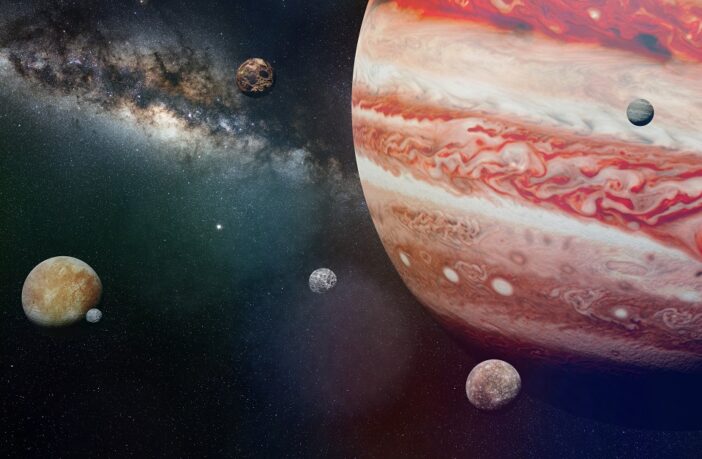A new study by an OU academic has provided a ground-breaking new insight into a huge Solar System event, the formation and migration of Jupiter.

Ben Rider-Stokes next to a Zeiss Crossbeam SEM (Secondary Electron Microscope) used to look at the textures of the samples
The research, published today in Nature Astronomy was led by Ben Rider Stokes at the OU and supported by an international team of experts and funded by the UK Science and Technology Facilities Council (STFC).
Angrite meteorites collected by a joint Japanese and Belgian Antarctic research expedition (JARE54 and BELARE-SAMBA) and others found in Northwest Africa were analysed at the OU’s world-class oxygen isotope (a form of a chemical element in which the atoms have the same number of protons) analysis facilities.
These samples revealed the presence of two oxygen isotopic signatures indicative of two different planetary origins within a single sample for the first time.
Author of the paper and OU Ph.D. researcher, Ben Rider-Stokes, explained why this is so important to planetary science:
“The formation and migration of giant gas planets such as Jupiter are crucial to the evolution of planetary systems, and yet the timing of these events in our Solar System remains largely unknown. Angrite meteorites represent some of the oldest materials in the inner Solar System, and therefore provide an exclusive window into the processes that occurred during this period.
“In this study, we have been able to unravel data that implies these ancient meteorites record evidence of two separate bodies colliding and mixing.
“We suggest that this mixing event was invoked by the formation and/or migration of Jupiter. Through isotopic dating of these samples, we can provide an empirical constraint on the timing of this hypothesised event for the first time.”
Due to the ancient age of these samples overlapping with the estimated age of Jupiter’s formation / migration, it is suggested that the impact event was caused by the gravitational disruption of Jupiter (material bouncing into one another). This work, therefore, provides isotopic evidence for the formation and migration of Jupiter for the first time.
Ben Rider-Stokes and international colleagues are currently investigating the hydrogen content of these samples to evaluate the role of impact events in terms of water delivery to the inner Solar System – the building blocks of life.
Ben added:
“What I find so exciting about this work is that we can use tiny amounts of material (less than a gram!) to provide important insights into enormous and important Solar System events.
“It goes to show how important sample return missions such as MMX (an upcoming joint mission by JAXA, ESA and NASA), even if only tiny amounts of materials are returned!”
Read the full paper on Nature Astronomy



